XMM-Newton at 20: The fascinating X-ray universe
9 December 2019
ESA's X-ray observatory, XMM-Newton, has now spent 20 years in orbit. In those two decades it has made many scientific breakthroughs, helping bring X-ray astronomy into the main stream of astronomical investigation.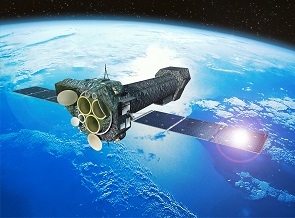 |
| XMM-Newton. Credit: ESA/D. Ducros |
"Before XMM-Newton, X-ray astronomy missions were run as kind of experiments," says ESA astronomer Norbert Schartel, who has worked on the mission since before its launch and became ESA's Project Scientist for XMM-Newton in 2004.
Earlier X-ray space missions were pioneering and had short lifetimes, meaning that only a small number of astronomers were able to collect data and use it for scientific purposes. The missions themselves were as much about learning how to do X-ray astronomy as they were about the knowledge that came from it.
ESA was determined to change that with XMM-Newton. Enough expertise had been gathered that the scientist and engineers could set about designing a long-lived spacecraft that would function as a general X-ray observatory. With more astronomers using data from the mission, the knowledge of X-ray astronomy's potential would spread beyond the confines of a group of experts. And it succeeded better than they could ever have imagined.
XMM-Newton's discoveries have contributed to all the major areas of astrophysical and cosmological research, ranging from relatively nearby celestial sources to the distant Universe.
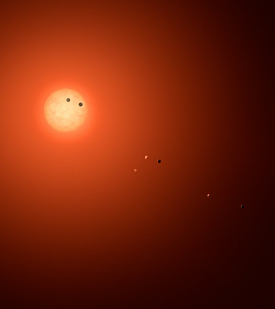 |
| Artist's impression of the ultracool dwarf star TRAPPIST-1 and its seven planets. Credit: NASA |
In our cosmic neighbourhood, XMM-Newton recently showed that planets in the habitable zones of nearby stars Proxima Centauri and TRAPPIST-1 were subjected to intense X-rays that would affect their atmospheres. This bombardment of high-energy radiation means we may have to rethink our definition of planetary habitability.
A major theme for the mission has been to provide astronomers with detailed observations of some of the most compact celestial objects in our galaxy: neutron stars. These are the collapsed hearts of dead stars. Although these stellar corpses are only about 15–20 kilometres in diameter, they contain as much mass as a star like the Sun.
The intense magnetic fields of neutron stars make their crusts break and the X-rays emitted have shown us tiny details on their surface. This was the case when XMM-Newton measured the magnetic field of a small region of the neutron star SGR 0418+5729, whose magnetic field is so intense that it is classed as a 'magnetar'.
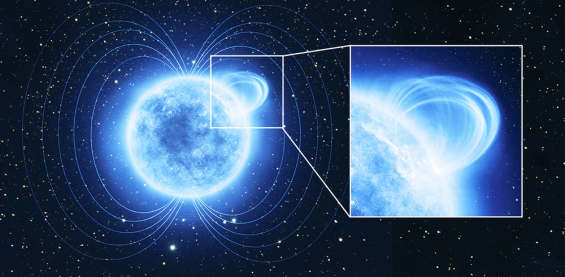 |
| Artist's impression of magnetar |
The mission has shown us the extreme Universe, where highly powerful phenomena drive the most extraordinary activity. For example, it discovered gas being ejected from two mysterious celestial objects in nearby galaxies at almost a quarter of the speed of light. They are part of a fascinating class of objects that astronomers have been investigating with X-ray, known as 'ultra-luminous X-ray sources'.
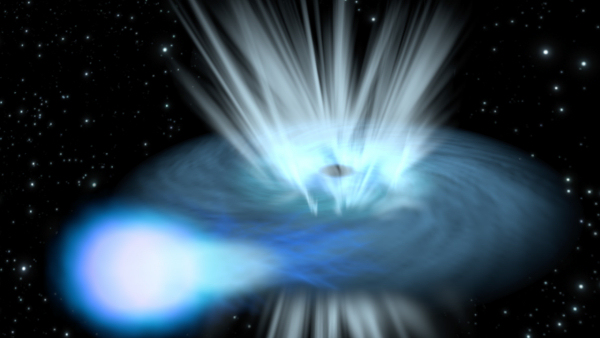 |
| Artist's impression of high-speed winds from an X-ray binary. Credit: ESA–C. Carreau |
As with every new major astronomical instrument, XMM-Newton revealed many cosmic oddities, including a neutron star that was 1000 times brighter in X-rays than was thought possible at the time. It may be that the magnetic field close to the neutron star is directing matter down into a collision with the neutron star's surface.
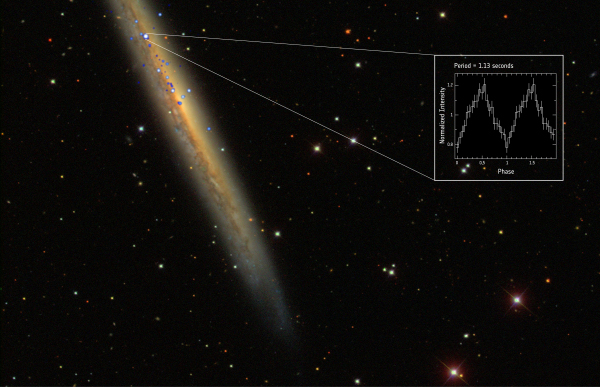 |
| NGC 5907 X-1: record-breaking pulsar. Credit: ESA/XMM-Newton; NASA/Chandra and SDSS |
"XMM-Newton's investigation of neutron stars has shown us that there are many mysteries to be explored in this realm. In its 20 years of operation, the mission has shown we live in a more complicated, and more fascinating Universe than we realised," says Schartel.
For further information, please contact:
Norbert Schartel
XMM-Newton Project Scientist
European Space Agency
Email: norbert.schartel![]() sciops.esa.int
sciops.esa.int





